Some of the recent developments include a rise in sparkling Vinho Verde, single varietals, and ‘ranging up’.
Vinho Verde is Portugal’s biggest wine region and also the third largest in Europe, yet, until recently, if you’d asked me a simple question about what to expect from its wines, you’d have been rewarded with an equally simple answer: something along the lines of “light, perfectly pleasant, cheap and cheerful, with a little spritz.”
There’s nothing inherently wrong with that response. There are certainly worse things to say about other wine regions and there’s definitely an eager market for the kind of wines I describe.
That said, Vinho Verde has so much more to offer. The region is adopting a smart strategy, bringing consumers through the door with something light and inviting, before ‘ranging them up’ to more complex wines, the focus of recent investment and innovation.
A foot in the past but where should they plant the foot in the future?
There’s a common misconception that the name Vinho Verde means ‘green wine’. Whilst it is true that a few wines have a slightly green hue, the name comes from the landscape. Visit the region and you’ll only see two colours, if you’re lucky: green (the landscape) and blue (the sea and the sky). It rains a lot here, so if you’re unlucky you won’t see lots of green and blue, you’ll see lots of grey instead, and you’ll get wet.
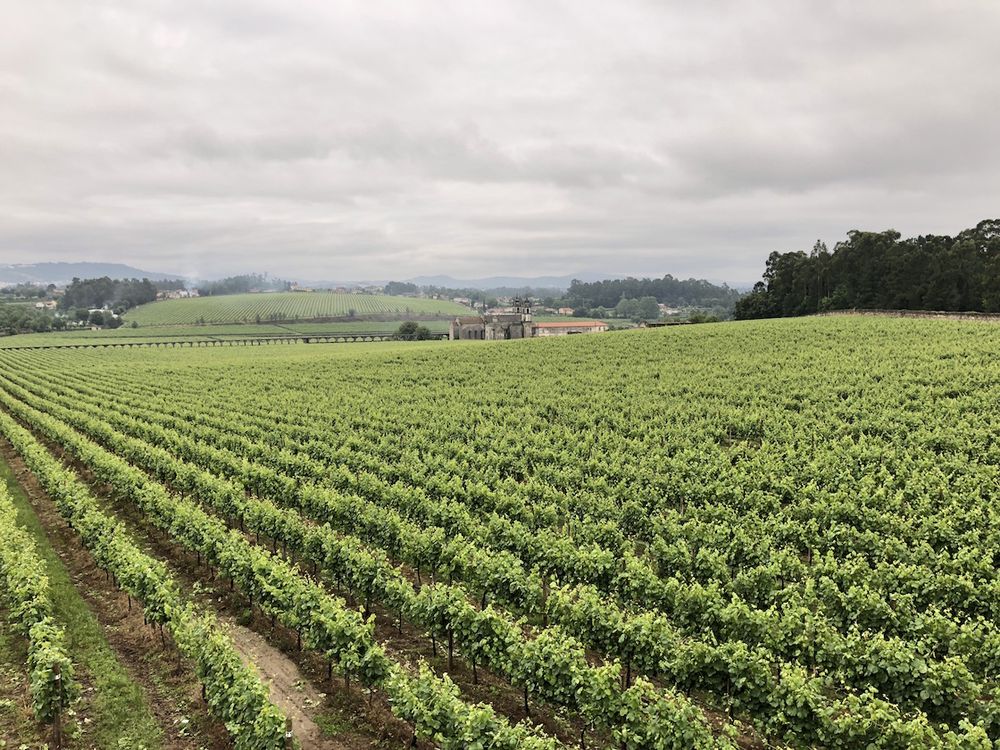
Seeing lots of grey and not much blue in Vinho Verde
Winemaking history is everywhere: the Romans settled here, planting the first vines, and the DO itself is more than a hundred years old. Britain was an early customer, helped by an established export operation for Port and a friendship with Portugal that’s unmatched by any other British bi-lateral relationship. That said, the UK is only the sixth biggest customer for Vinho Verde wines, with the United States in the number one slot, followed by Germany, France, Brazil and Canada.
The region accounts for a whopping 40% of all Portugal’s exports of still wine, and the most interesting figures chart the ratio of value to volume: both lines are heading up, but the stellar growth comes from a doubling in the value of exports to more than €60 million, supporting the DO’s stance that there’s been a shift in perception, rather than just price.
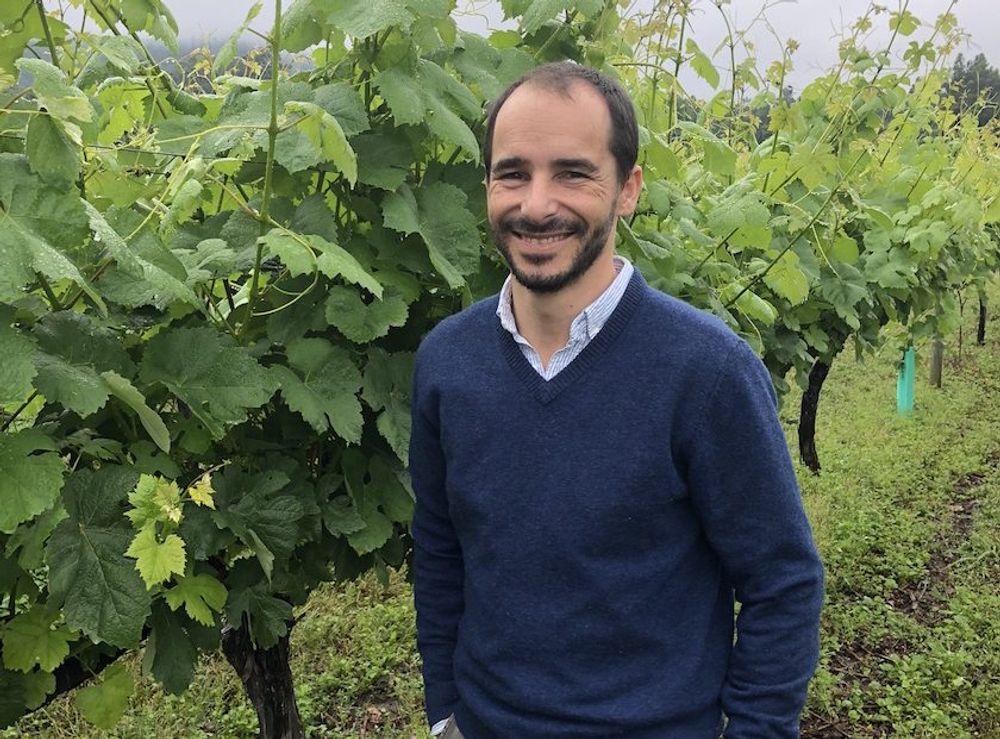
Pullovers in summer: Antonio Braga, the winemaker for Quinta de Azevedo
That change has also prompted some searching questions: “What style should we follow, where should we be? It’s the biggest challenge currently facing the Vinho Verde region,” Antonio Braga, the winemaker for Quinta de Azevedo, tells me. “We are all experimenting with what we have in our terroir to see what works best”. Braga made reds in the Douro before moving here, to work for the Sogrape group, where he has rapidly established a reputation as a master blender of the region’s white varieties.
His wines, sold in the UK through Liberty, perfectly reflect the region’s ‘ranging up’ strategy: starting with Gazela, a simple, fruity, carbonated wine that retails in Portugal for as little as €3 and hasn’t made its way here yet; then Azevedo, a blend offering the citrus, green apple freshness for which the region is famed (£9.99 RRP). Next is Quinta de Azevedo, an estate wine, with richer texture through some work with the lees (£10.99 RRP). At the top of the range, there’s the excellent Morgadio da Torre single variety Alvarinho, Brago describes as “a wine made for the table” (£15.99 RRP).
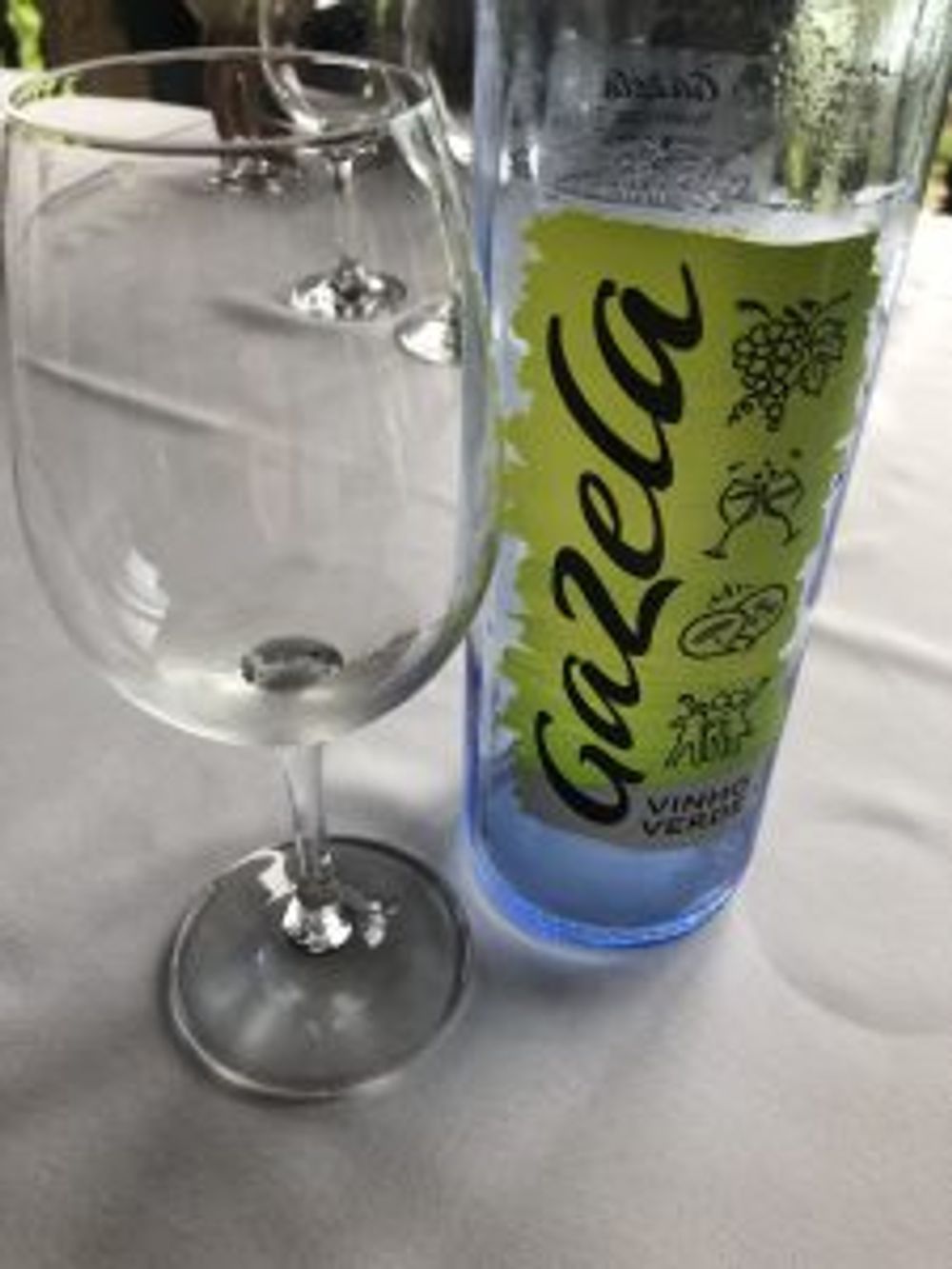
Getting to grips with the region’s many indigenous varieties
Recalling my wine exams, I went slightly insane trying to memorise Portugal’s grape varieties. Just spelling them is challenging enough, not helped by the modern curse of ‘autocorrect,’ which comes up with some perfectly plausible alternatives.
Vinho Verde’s 21 thousand hectares of wines produced more than 90 million litres of wine last year, 86 per cent of which was white. Famed for its blends, the region has more recently produced some interesting single varietal wines, for which there is now a fashion.
Of the indigenous grapes, Loureiro is the traditional star, bringing a blossomy elegance to the blend; Azal brings crunchy green apple acidity, much in demand during recent hot summers; Arinto offers plumper, riper green fruit; Avesso has a delicious, creamy, peach character; the delicate Trajadura brings more orchard fruits; and then there’s the wonderful Alvarinho, which brings its Rias Baixas neighbour Albariño’s beguiling combination of aromatic complexity, texture and sea breeze salinity.
Confusingly, an Alvarinho can only be labelled ‘Vinho Verde’ if it comes from the northernmost sub-region of Monção e Melgaço. Elsewhere in the region, the wines must have the ‘GI Minho’ designation. That’s all due to change in 2021, when the rules will be relaxed and sanity restored. The Minho designation will continue, despite representing a mere 10% of the region’s wines; it’s useful for those who want to experiment outside the traditional Vinho Verde DO rulebook.
Granitic soils dominate the nine sub-regions, each subtly different with most specialising in a specific variety. As you’d expect, Alvarinho dominates in the north, bordering Rias Baixas. Loureiro does well along the coastal zones, Azal thrives inland, where there’s some altitude to give that acidity, and the very pretty Avesso dominates in the slightly warmer south.
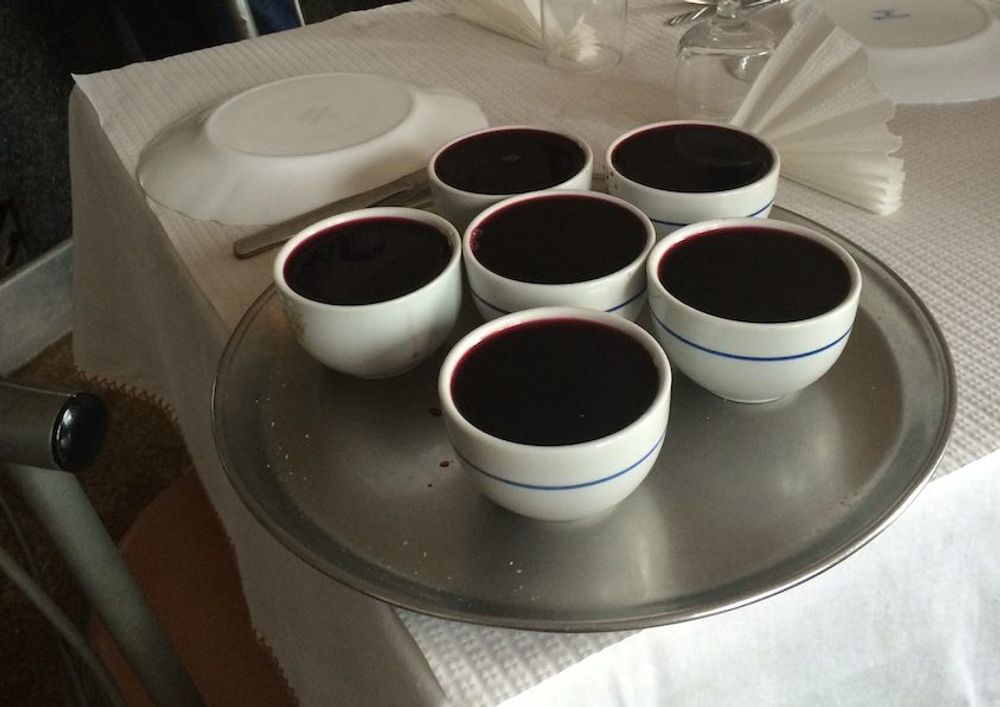
Vinho Verde used to be predominantly red wine. Even today if you walk into a local bar Vinho Verde is served in a china cup and is quite a challenging drink!
Organics, red Vinho Verde and the growth of sparkling
Organic winemaking is limited in Vinho Verde, due to the significant amount of rainfall, at 1200 mm per year. All that moisture also means that vigour is a constant challenge, with the region now moving from its traditional pergolas to more conventional vine training systems.
Historically, red wines accounted for the bulk of the region’s production. Nowadays, it’s a mere 7%. Vinhão might explain that decline. The most-planted red grape, it produces a wine that’s distinctively, dramatically – some would say dreadfully – different. With the approachability and charm of a rabid vineyard dog, it produces a dark, tart, highly acidic, bitter fruit bomb, which sharply divided opinion. Bizarrely, I rather liked it, finding it invigorating and rather exciting. Others looked ready to cry. If Marmite made wine, this would surely be it.

The best Vinhão came with bubbles: Quinta do Ferro, an accomplished producer of sparkling wines, makes a deep-red Traditional Method example (€11 at the winery), which manages to balance that searing acidity with delicious ripe red berry and sour cherry flavours. It is low in alcohol too, at just 10.5%. Currently unavailable in the UK, it would make a really distinctive food wine on an adventurous list.
Given the traditional light spritz in a Vinho Verde, it’s little surprise that sparkling wines are a growth area for the region, with a range of production methods, from basic carbonation, to Charmat and Traditional Method catering for all the price points. The competitive nature of the UK’s sparkling market means that most of Portugal’s examples remain either in the domestic market, or targeted at the Benelux countries.
Boasting the oldest vineyard in the region, Quinta da Calçada, based around a spectacular ‘Relais & Chateau’ hotel, has been a pioneer in the development of sparkling, but the real star is a still wine, produced in tiny quantities from those ancient vines.
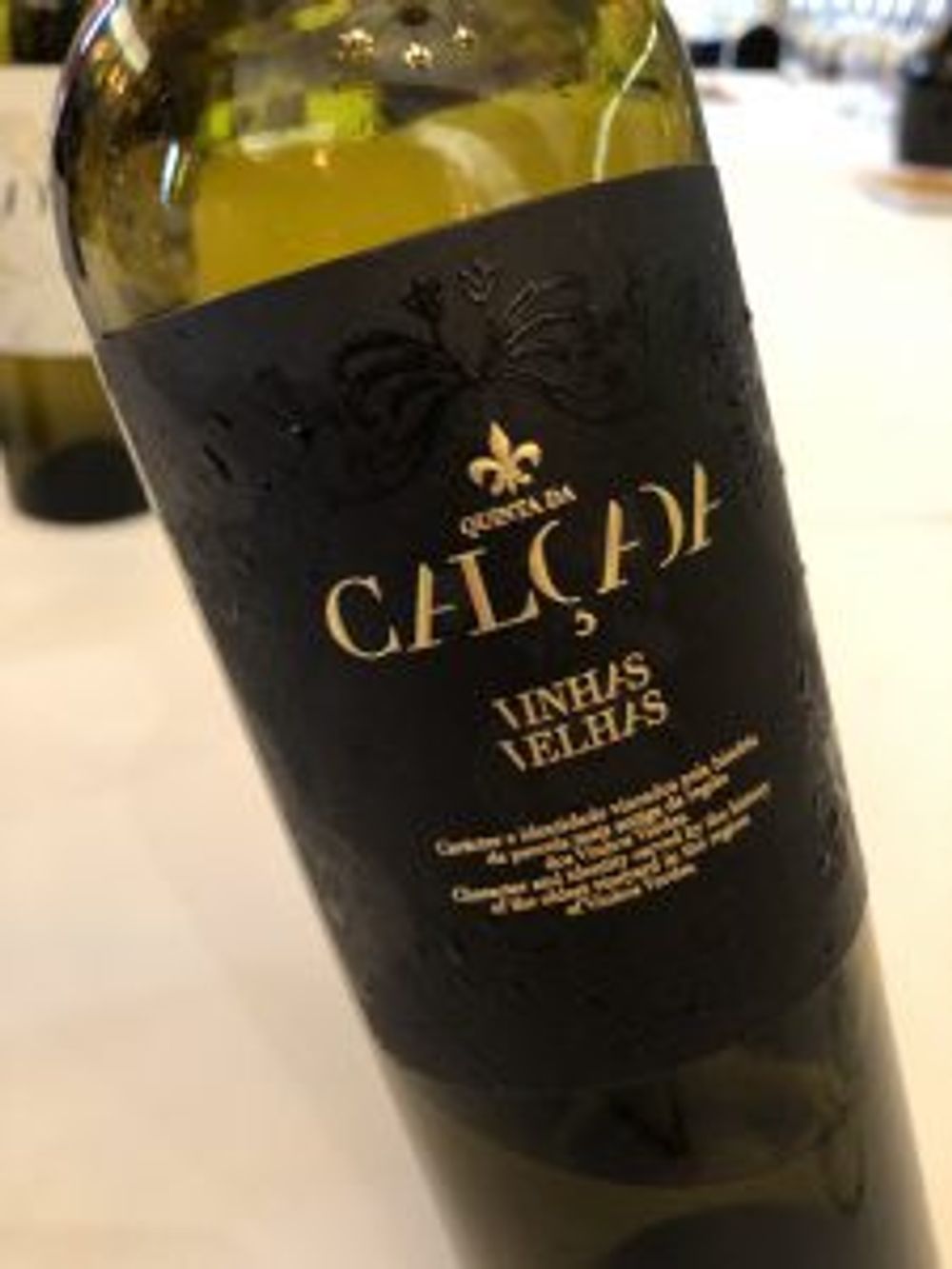
Vinhas Velhas (€20 at the winery) is a field blend containing a veritable pot pourri of varieties, some of which remain unidentified to this day. I sampled the extraordinary 2015 vintage, which had wonderful aromas of iced lemon tea and verbena, with subtle spice, rich texture and an ethereal smoothness. Quite unlike any other wine I tasted, this limited-production historical masterpiece also seemed totemic, representing the extraordinary capacity of Vinho Verde to confound my preconceptions.
David Kermode is a writer, broadcaster and wine presenter, with his own website vinosaurus.co.uk































